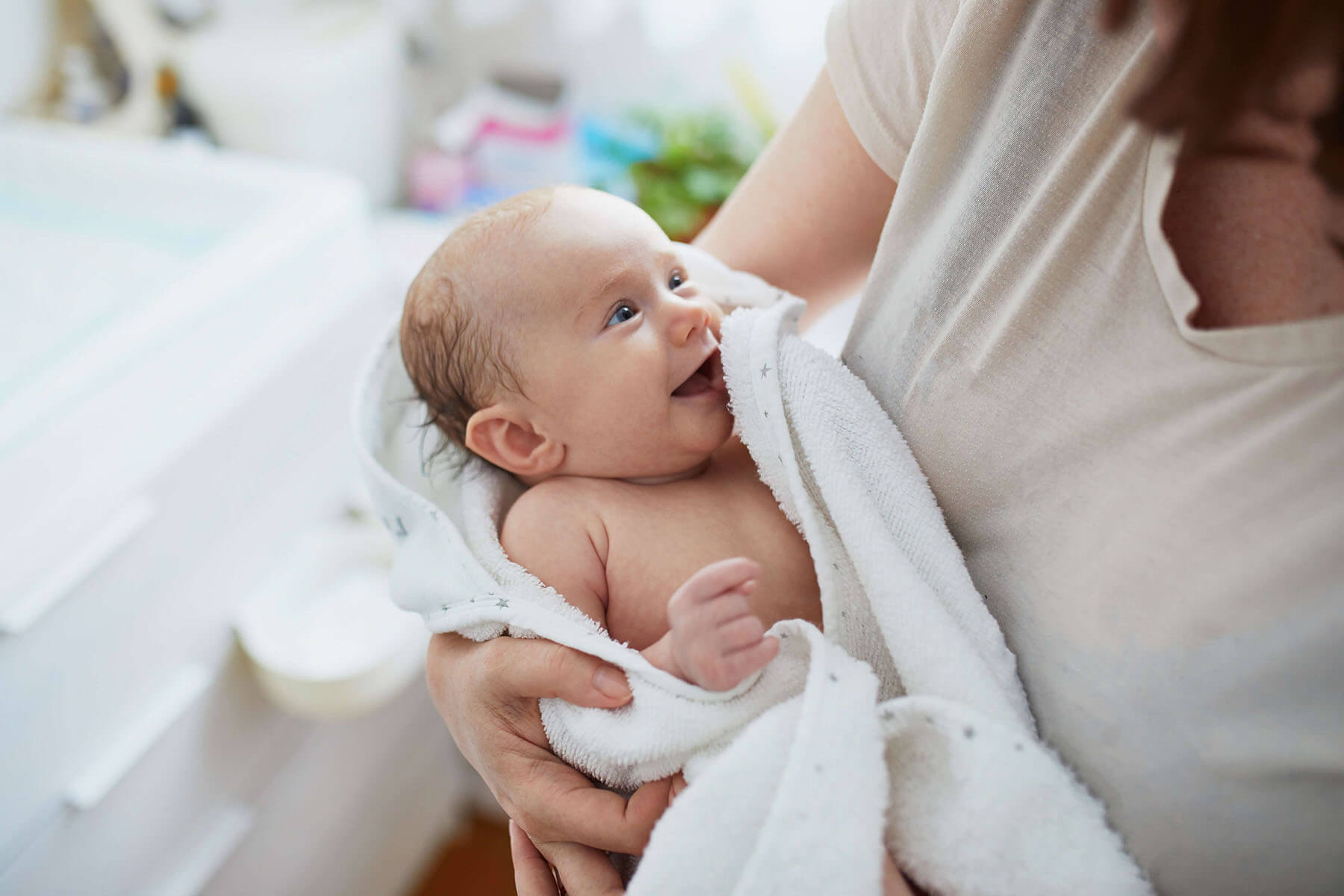
Bathing Tips for Babies
Bathing your baby is essential to infant care, and it’s vital to ensure it’s done safely and comfortably. Here are some expert-backed tips to help you with your baby’s bath time.
Less is More How often you should bathe your baby depends on its age, but it should never be every day. During the baby’s first year, three baths a week are recommended, as bathing more frequently can dry out your baby’s skin.
Choosing the Right Bathing Equipment
- The U.S. Consumer Product Safety Commission recommends a hard plastic baby bathtub with a sloped, textured surface or sling that keeps the baby from sliding. To ensure it meets current safety standards, use only an infant bathtub manufactured on or after October 2, 2017.
- Avoid using bath seats as their stability is not ensured.
Supervision and Safety Practices
- Always use touch supervision when bathing your baby. Have bath supplies and a towel in reach so you always have your hands on your baby. If you must leave the room, so does the baby.
Water Temperature and Safety
- Fill the basin with 2 inches of warm water. Always check the water temperature before putting your baby in the basin, as baby’s skin can scald easily. "Check the water with your elbow, as it is more sensitive to temperature than your hand." The water should be close to body temperature and feel neither hot nor cold to the touch.
Maintaining Warmth During Bath Time
- After undressing your baby, place them in the water using one hand to support their head and the other to guide them with their feet. To help maintain their warmth, pour warm water over their body, but not running water. This will help keep your baby comfortable.
- Start with your baby's face and scalp, gently washing the soft spots and creases in their neck and behind their ears. Then add baby soap and use a washcloth to gently wash the rest of the baby's body, rinsing off the soap after cleaning each area.
Gentle Cleaning Practices
- Soap: Doctors recommend you use mild, neutral-pH soap and a washcloth to wash your baby's face and hair and then rinse immediately. Wash your baby's hair 2-3 times per week. Baths should not be longer than 10 minutes at a time.
- Cradle Cap: When bathing, you might see scales loose on your baby's scalp. This is called cradle cap, a harmless condition where a baby's head has scaly patches. The scales can be loosened gently with a soft-bristled brush while shampooing or left alone, as the baby will outgrow them.
Post Bath Care
- Dry Off: After the bath, wrap a towel around your baby's head and body to warm them up. After drying them off, it is time for skincare!
- Skin Care: Immediately after patting your baby dry gently, apply moisturizer and bébé Bottoms™ diaper rash crème spray before a fresh diaper.
Buy bébé Bottoms™ Diaper Rash Crème Spray on Amazon.
References:
American Academy of Dermatology Association. (n.d.). How to bathe your newborn. American Academy of Dermatology Association.
https://www.aad.org/public/everyday-care/skin-care-basics/care/newborn-bathing
American Academy of Dermatology. (n.d.). How to treat eczema in babies. American Academy of Dermatology.
https://www.aad.org/public/diseases/eczema/childhood/treating/treat-babies
Navsaria, D. (2023, September 23). Bathing your baby. HealthyChildren.org.
Pahr, K. (2020, April 13). How often should I bathe my baby? The New York Times.
https://www.nytimes.com/article/bathe-newborn-baby.html
Stockhausen, A. L. (2020, March 9). Avoiding dry winter skin in babies and toddlers. HealthyChildren.org. American Academy of Pediatrics.


